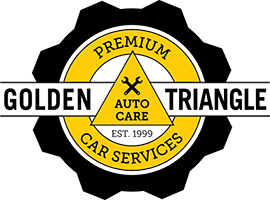
Call Us Now
303-573-1335

Okay, okay, so there’s really only ONE difference between these types of lights. Christmas lights bring joy and merriment, while auto warning lights can cause anxiety and that nagging lump of coal type of feeling. Fortunately, with plenty of time to spare before the presents are opened, we bring you a brief explanation of three key warning lights.
Keep in Mind: The first two lights below are classified as Urgent – illumination of either of these lights is a signal to pull over and turn off the engine immediately.
- Engine Oil Light: As warning lights go, this one is rather straightforward. Illumination almost always means there is either a low oil level or low oil pressure. When an engine is operated with a low oil level or pressure, excessive heat builds up, which can cause damage.
After pulling over and turning off the engine, check your oil level (see our November 19 entry for instructions if needed). You may find a normal level; in this case, the cause of the light is something other than a low oil level or pressure. Out of caution, you should still have the vehicle towed to a repair shop for evaluation.
If the oil level is low, you can top it off and then drive to a repair shop for evaluation.
- Engine Temperature Light: While this light is more frequently seen during warmer months (and therefore not a true Holiday Warning Light!), it can still make an appearance over the holidays. Illumination signals that the vehicle’s cooling system is not operating properly. Once again, you should pull over immediately and turn off the engine.
Unfortunately, a quick and easy check is not possible. You should let the car sit for 30 minutes or more to cool down. Opening the radiator cap before the system has cooled brings the risk of burns from hot water/coolant/gas, which is pressurized while the system is hot. Once again, your best option is to have the vehicle towed to a repair shop.
However, if you prefer to check the system yourself:
- Using a rag, open/turn the coolant reservoir cap only until the first detent, then allow any residual pressure to release. Next, open the cap the rest of the way. If the level is low, add (ideally) a 50/50 mix of coolant/water, although pure water can be used if necessary. While it is best to have the vehicle towed to a repair shop, you can cautiously try to drive to a repair shop, keeping an eye on the temperature gauge.
**Continuing to drive a car that is overheating can cause serious engine damage.
- Check Engine Light: This light is typically less urgent than the oil and temperature lights, although on the flip side, there are many more potential causes of illumination.
**The exception is if the light is flashing, which signifies the potential for damage with continued operation. In this case, you should pull over and turn off the engine as soon as you can safely do so. Typically, however, the check engine light will be steady, in which case it is not necessary to turn off the engine and have the car inspected immediately.
One common cause of an illuminated check engine light is a loose gas cap, which may occur after filling the vehicle. If this is the cause, the light should turn off within 20 starts after the cap has been properly tightened. While an illuminated check engine light does not require immediate evaluation, you should not drive for months and months with the light on without evaluation. The light can signal a problem in any of a number of your vehicle’s systems.
